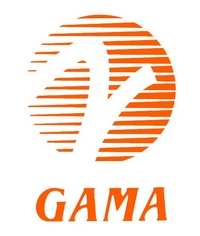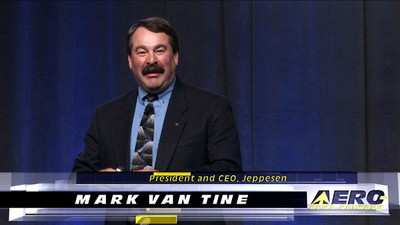Wed, Jul 13, 2011
Stresses Importance Of Future Measures
 The Chairman of the GAMA Security Committee and the President
and CEO of Jeppesen, Mark Van Tine, testified Tuesday before the
House Subcommittee on Transportation Security regarding the
authorization of the TSA.
The Chairman of the GAMA Security Committee and the President
and CEO of Jeppesen, Mark Van Tine, testified Tuesday before the
House Subcommittee on Transportation Security regarding the
authorization of the TSA.
Van Tine reminded the subcommittee how the GA industry has
worked diligently to increase security and awareness of potential
threats to the aviation system. These efforts have led to the
development and implementation of over a dozen mandatory and
voluntary security initiatives. These include enhanced pilot
licenses, the Twelve-Five Security Standard Security program, and
the “See Something, Say Something” program and its
predecessor “Airport Watch.”
To promote further security improvements and for increased
operational efficiencies, Van Tine addressed several areas where
GAMA believes the committee should focus their efforts.
The Large Aircraft Security Program (LASP) was first published
in 2008 and it is the TSA’s first attempt at regulating
private air travel. Since the introduction of LASP, the TSA
and industry have agreed upon a framework that will address
legitimate security risks while ensuring the rights of citizens to
fly their own airplanes. “We have made good progress on
LASP and appreciate the strong support from members of Congress who
have recognized our concerns and urged TSA to develop a more
practical and effective approach,” said Van Tine. “GAMA
asks that the Administration move quickly to incorporate the
industry’s input and finalize this rulemaking as it will
enhance security without creating negative consequences for pilots
and operators.”

Like the LASP, Van Tine also took the opportunity to encourage
the completion of aircraft repair station security
rulemaking. “GAMA has stressed the importance of a
risk-based program for repair stations and underscored the effect
inaction has upon exports of U.S. products and expansion into new
markets. This is especially important since the majority of
airplane and equipment sales are to foreign customers. It is
imperative for the TSA and the Department of Homeland Security to
move forward and complete this rulemaking,” said Van
Tine.
Van Tine also spoke about the TSA’s use of security
directives to vastly expand existing security requirements without
consideration of the implementation challenges, operational impacts
and economic burdens these mandates impose on the aviation
industry. “We recognize and respect TSA’s
authority to issue security directives, however, we do not believe
that TSA should use them to make standing policy unless there is a
compelling and immediate national security risk that warrants
them. This is an issue of great concern to the general
aviation community and we urge Congress to implement procedures for
the review of security directives that are not temporary in
nature,” he concluded.
More News
Performance-Based Navigation (PBN) [ICAO] Area navigation based on performance requirements for aircraft operating along an ATS route, on an instrument approach procedure or in a d>[...]
The Airplane Came To Rest Underneath A Set Of Damaged Power Distribution Lines On The Floor Of A Coulee On June 19, 2025, at 1412 mountain daylight time, a Cessna 172K airplane, N7>[...]
Aero Linx: FAA Managers Association (FAAMA) Recognized by the FAA, FAAMA is a professional association dedicated to the promotion of excellence in public service. The Association i>[...]
From 2023 (YouTube Edition): Jet Central Micro-Turbine Engines Impress Founded in the late-1990s, Mexico City-based Jet Central produces a unique and fascinating line of micro-turb>[...]
Also: ANOTHER Illegal Drone, KidVenture Educational Activities, Record Launches, TSA v Shoes The Senate confirmed Bryan Bedford to become the next Administrator of the FAA, in a ne>[...]
 ANN's Daily Aero-Term (07.10.25): Performance-Based Navigation (PBN) [ICAO]
ANN's Daily Aero-Term (07.10.25): Performance-Based Navigation (PBN) [ICAO] NTSB Prelim: Cessna 172
NTSB Prelim: Cessna 172 ANN's Daily Aero-Linx (07.10.25)
ANN's Daily Aero-Linx (07.10.25) Classic Aero-TV: The Big Business of Diminutive Powerplants
Classic Aero-TV: The Big Business of Diminutive Powerplants Airborne 07.11.25: New FAA Bos, New NASA Boss (Kinda), WB57s Over TX
Airborne 07.11.25: New FAA Bos, New NASA Boss (Kinda), WB57s Over TX




